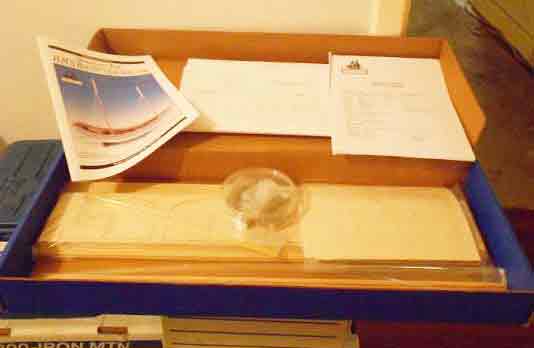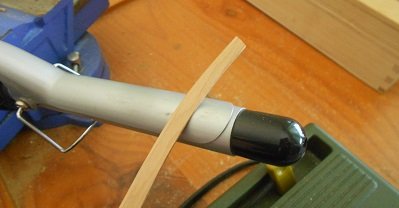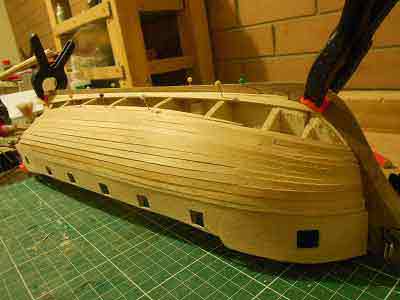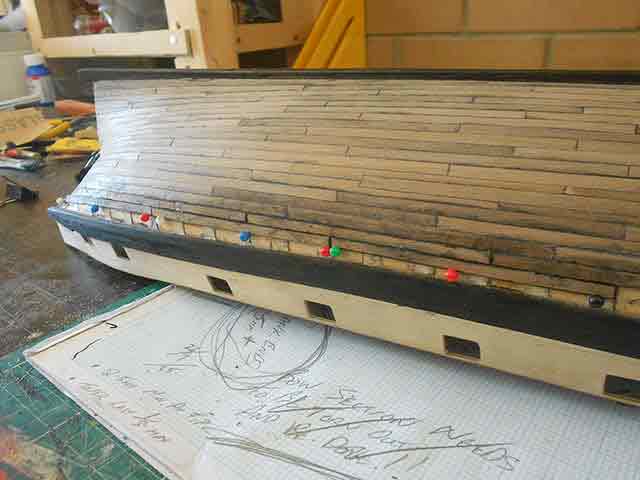
CaptainSteve - an modelling biographic
The purpose of this web-site - quite apart from being a required assessment for various units of my Web Development course - is to showcase the models I have built over the past 20 years or so.
For, Dear Visitor, many years ago I discovered a passion for the mighty sailing vessels of yesteryear. The majesty of the Spanish galleons, the economic force majeure of the VOC (Dutch East India Company) fleets and the sheer power commanded by massive, multi-decked English Ships-of-the-Line spoke of a time gone by; a time when the power of a kingdom, a royal House, or an empire was projected in the ships in which they traversed the seas.
In my youth - like many young lads - I had dabbled with plastic models; mostly planes, tanks and other military hardware. But, alas, life soon took over, and childhood pursuits were forced to give way to reality. But one fateful day I found myself in a store which, among other things, sold model kits - and spied something which were to immediately give purpose to almost every spare moment over the next 20 years.
And so, after handing over a fistful of dollars, I went home that day with my first all-wooden model ship kit - completely clueless as to what I had just gotten myself into. As I soon found out, these kits were nothing like the plastic model kits of younger days. Those kits had come with pre-made parts which just had to be glued together.

But inside this box were bundles of un-shaped wood strips; cloth from which sails were to be cut; packets of extremely small pieces of which I had no idea of their purpose; and yards upon yards of variously-coloured threads which were to become the rigging - plus pages and pages of highly-detailed plans.

I learned a lot from that first kit. One of the earliest lessons was how to bend the strips of wood to form the planking around the hull. Of course, the instructions did not explain how this was to be accomplished.
At first, I tried steaming them, then soaking them in boiling water for hours before trying to gently force them into position. Eventually, I were to "borrow" a hair-curling iron and found this to be my preferred method.

Constructed during the evenings and weekends, that first kit ended-up taking almost five years to complete. But having been bitten by the modelling bug, I was quick to purchase a second kit. That one went a little quicker, requiring just a mere three years to build.
Some time after that second kit was completed I was to find an online forum which has become my internet "home" for most of the past ten years - and, indeed, the only social media platform of which I have ever been a member. I had actually purchased a third kit at this point and, after doing some research into the history of that ship, I discovered ModelShipWorld (see right).
Here was collected some of the best ship-modellers across the globe ... and they were more than happy to answer all of the questions I was to ask.

Unfortunately, after a number of false-starts, that third kit was eventually to be consigned to the dust-bin, however, it was quickly replaced with another. Following an alcohol-induced Saturday afternoon discussion with a friend of mine, I soon found myself purchasing another kit ... and being a new member of MSW, began writing my first online blog to document that build.
And, Dear Reader, it was around this time that the on-line persona of CaptainSteve first came to be. Over the course of his next two builds - which you can view on the following pages of this web-site - CaptainSteve developed his method of writing into a mash-up of invented words, modern and Elizabethan English, as well as a mixture of first-, second- and third-person speech that wouldst very often change context mid-sentence.
At time of this writing, CaptainSteve doth currently have a fifth ship on his work-bench - the bomb-vessel, HMS Granado. This, however, has remained untouched for the past few years as his studies have taken precedence; plans for yet another ship-modelling project also exist with the intention to build all three of Christopher Columbus' ships: the Nina, the Pinta and the Santa Maria.
But more on these matters another time ...